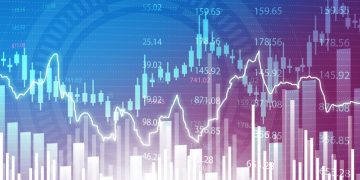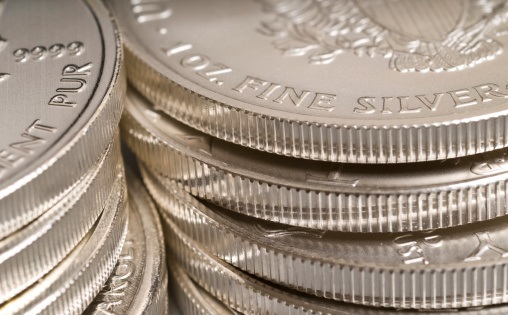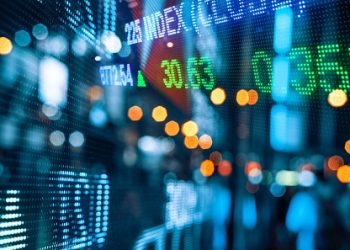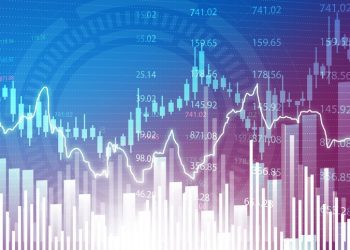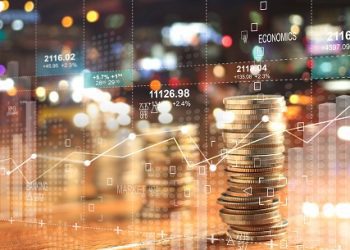Retail investors versus big funds: after GameStop, it is the turn of silver. The price of silver hit its highest level in 8 years earlier this week, climbing above $30 an ounce.
How this could happen is simple to explain, at least on paper. A huge number of retail investors coordinated themselves and decided to take the same position, almost at the same time, to make the value of a financial instrument soar.
After causing GameStop to climb spectacularly, this “army of traders” switched their attention to silver. The precious metal closed last week up by more than 5%, while gold lost about 0.3%. Even most surprisingly, earlier this week silver gained as much as 10% in a matter of hours, although it has since lost a little of its lustre to drop back below $28/oz.
But let’s rewind the tape, to retrace the latest events of this (alleged) battle between many Davids (the retail traders) and a few Goliaths (the large funds).
Last week, Dogecoin, a cryptocurrency with a modest capitalization, suddenly saw its value increased tenfold in just 24 hours, from 0.007 to about 0.07 cents.
The case of the American firm GameStop was even more striking: the Texan videogames company was worth less than $20 at the beginning of the year, jumped to about $77 on January 25, and to a whopping $325 last Friday, thanks to a major rally that boosted the market capitalization of the company to over $22 billion.
The purchase orders sparked from Reddit chats, and spread at lightning speed. Unity was indeed strength in this case. The coordinated move of a wave of small investors overwhelmed numerous investment funds, some of which racked up multimillion-dollar losses. Among them was Melvin Capital, which lost 53% in January, due to its short exposure on GameStop.
This week saw an attempt to replicate this spectacular rally on silver, a much larger and above all more mature market. As with stocks, the silver price rises when demand outstrips supply. If the disproportion between supply and demand is high, the rise becomes a rally, often uncontrolled. In a case like this the mechanism can become a self-fed circle, and not necessarily a virtuous one. Investors who bet on a fall in the price of the underlying commodity found themselves trapped as the cost of closing their short positions became more and more costly. As panic set in, many ran for cover, buying at a higher price, recording big losses, and boosting prices even further.
But it does not stop there: almost 50% of the total demand for silver comes from the industrial sector. Some of the companies that use it, worried about the sudden jump in price, might have decided to buy, to avoid having to pay even higher prices in future. So, they also contributed – involuntarily – to feed this bullish spiral that saw silver top $30/oz for the first time in more than eight years.
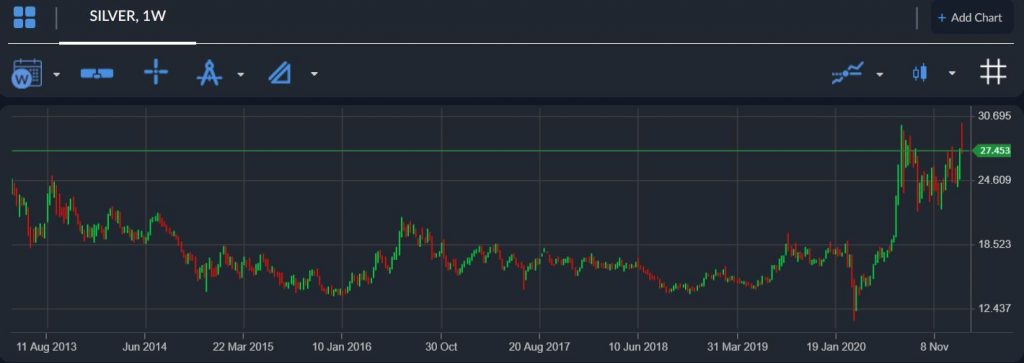

THE SILVER MARKET
The silver market is made of many different segments. Firstly, it can be divided into physical and financial markets, then these two segments can be broken down further.
In the physical world you have mining companies, jewellery makers, central banks (which use precious metals as a reserve), industrial users (think of technology companies or photovoltaic producers) and finally physical silver as an investment (coins, ingots, and bars).
On the financial side you also have a variety of players, including large American ETFs and futures (with various maturities) and a plethora of other financial instruments, such as options, CFDs or investment certificates.
Effectively, after attacking two little fish, retail investors have jumped on a whale. The growing size of the prey, however, also increases the risks for the hunters. If this situation were to go on for a long time, regulatory intervention cannot be excluded.
On the one hand, the authorities could start sanctioning abuses or otherwise restricting trading on margins (thus further limiting leverage).
On the other hand, an attack on raw materials could have repercussions for inflation in the medium term. This would worry the central banks greatly and could push them to sell some of their reserves or to raise interest rates, in order to calm things down. And this would hurt small investors in the process.
History teaches us that these attempts often end in ruin, especially in big, liquid markets such as silver. One of the most famous is the case of the Hunt brothers in 1979-1980.
At the time, the brothers Nelson Bunker, William Herbert and Lamar Hunt came to own over 30% of the silver in circulation. In just over a year, they managed to raise the price of silver by 60%, only to collapse when Comex (the futures market) required an increase in margins, to limit the exposure. Their assets dissolved within a few months, while the price of silver slipped quite rapidly from its historic highs of $50/oz to around $10.
As we write, silver has dropped by 5% and the price is below $28. In this case, the fundamental drivers are holding, at least for the time being, against the irrationality of markets. Maybe a sign that history is about to repeat itself?





